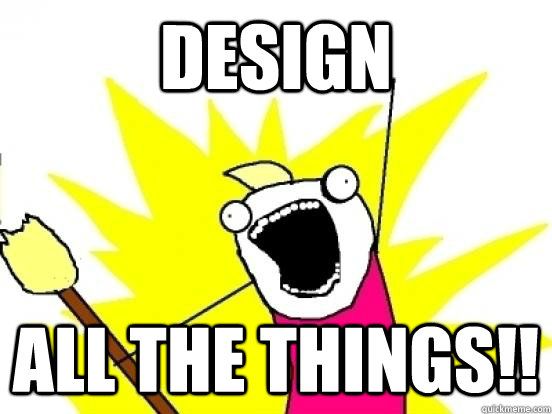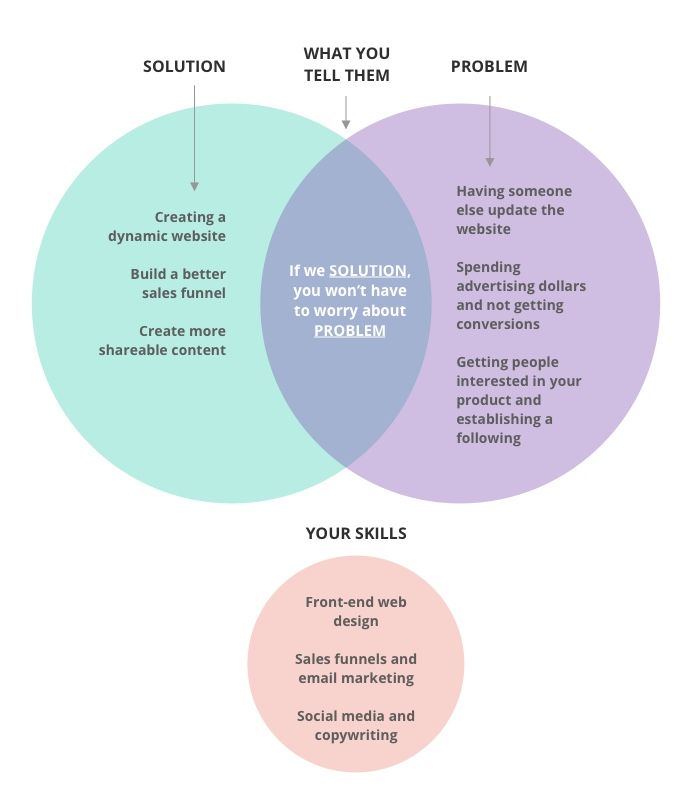Many of my students are just starting their careers in design, others are a bit more seasoned and may have gotten lucky with on-going work from one or two clients but find it hard to attract new ones and compete.
How do you sell your services as a freelancer? If you’re a designer, you probably spend a lot of time making your portfolio look pixel perfect, posting on Dribbble, applying for jobs online and making sure your CV/Resume match all the check-boxes on the job application:
We are expanding our company and we’re seeking a well-rounded designer that can create a beautiful website for our company and new products. Our ideal candidate dreams in pixels, designs modern websites and has experience with front-end coding.
- Are you well versed in Adobe CS?
- Do you know how to implement a design system?
- Are you familiar with HTML and CSS? Do you love to problem solve? Do you love fast-paced environments?
- Do you drink unhealthy amounts of caffienated beverages?
- Can you walk while chewing gum at the same time?
- Are you prepared for your husband to leave you because you work too much?
Then you might be the perfect fit for our role as UI/UX/Visual/React/Company Mascot/Project Manager/CTO position!!!!
The biggest mistake I see freelancers making is trying to sell themselves and their services. “I have 10 years of experience, I know how to design ALL the things! I have help hundreds of clients create amazing websites. I’m the one for the job because I don’t just walk while I chew gum, I run!”

Sound familiar?
In my experience (both in applying for design jobs and hiring designers) companies want to know ‘How’ you think rather than ‘What’ you think. They are more interested in hearing about how you solve problems and make decisions, rather than hearing you ramble on about the list items on your CV.
Businesses are also vain, they want to know what you know about their company, even if you are basically just repeating back to them some variation of the stuff written on their Linkedin profile.
For instance, I interviewed for a UI/UX design position for a company that was looking to hire a designer to convert their static marketing website into a dynamic WordPress website. So I did some research about the company and found out that their site is built on Rails. That means, that every time they want to update the copy on their marketing site they have to go through the IT department, who then needs to update the site through the Rails app and deploy the changes.
So I lead with something like. “Let’s get you over to a more agile publishing platform so you can handle updates yourself, there’s nothing worse that having to wait 3 weeks for the IT department to change one sentence on the site, am I right?!?!”
They totally resonated with that and it immediately told them that I understood their pain and that I knew how to fix it.
If you went to a chiropractor and she said to you "I've spent the last 10 years adjusting the T1 on the Thoracic spine". vs "Does your hip hurt? Do you feel a shooting pain in your low back when you sit at your desk for hours? I'm gonna adjust that with some pressure and then give you some things you can do on your own to prevent it from happening again"'. Which one would make you want to pay that chiropractor for their services?

What a business says they ‘want’ and what they actually need are not always the same. This company didn’t need a WordPress website, the marketing team needed a way to mitigate the back and forth with IT so they can make simple copy changes to the website without having to wait months for IT to fit them into their backlogged deployment schedule.
Look for the problem, the REAL problem in the job posting and apply based on that.
More important than trying to sell your services there is something both you and your client need to understand:
A website is not just informational, it's not just a pretty online business profile. A website is a commodity, or even more accurately it is an investment.
Is their current website helping them meet their business goals? Is it actually making them money or just costing them money? What are their goals and what are they ultimately trying to achieve by getting in front of their user’s online?
Get them really clear on this and get yourself really clear that you aren’t just selling a product or service. You are selling the promise of getting them get to their goal.
Your clients don’t want a website, they want their business to be more profitable.
This perspective was really eye-opening for me, it alleviated the pressure and discomfort I always felt trying to pitch myself for a position and 'sell' my services. By approaching potential clients and interviews this way, I was putting the attention on them, on their business and their problem. I just happened to know a good way to solve it.

When I was starting out I learned to customize WordPress themes before I learned how to code. I applied for a job in which a client was adamant that they didn’t want WordPress but rather just a static HTML site. I was desperate for the gig but didn’t know HTML. So I looked at the problem, the REAL problem and found out that one of their designers told the CEO that he needed someone to code their designs in HTML. I asked if I could hop on a call with the client and the designer. I said "it seems to me that you will be updating your site relatively often with all the conferences you have coming up. I could easily take your existing design and replicate it exactly in WordPress and then give you a walk-through on how to keep it updated, even for the project or business team members that aren’t as tech-savvy." Turns out the designer was reluctant because he'd only had bad experiences with WordPress where his designs didn't look like his mock-ups and the CEO didn’t really care either way, he was just excited to hear the words project and business in a sentence about design and code.
Once I quelled the designers fears and promised her that the site would look exactly like her designs and reassured the CEO that the benefit of this kind of direct site access would far outweigh the slightly higher cost of the WordPress integration, we were shaking hands and signing contracts. All of this because I didn’t know HTML, which was explicitly asked for in the job description. Now it was on me to deliver and that’s where the real work of applying my design knowledge, skills, theory and practice really gets put to the test.
Just be very matter of fact, truly think about how you would solve their problem, frame it as an investment and give them a taste. Either they buy into your solution or they don't. If they don't you iterate on your own job application approach next time, learn and test again. Treat your job hunting the same way that you treat your design work and you'll be less susceptible to discouragement.
Now this is not a recommendation to manipulate your client, it’s just to say that more often than not, you really have to read between the job posting lines, there is often an opportunity to provide a solution for the client they may not have thought and one that aligns with your skill-set the best.

There is often an opportunity to provide a solution for the client they may not have thought.
Armed with this perspective, I invite you to try this the next time you are applying for a job, maybe even apply for a job you really don't think you'll get just to see if you can leverage this type of thinking and approach to the offer. You may just be pleasantly surprised at the outcome.

